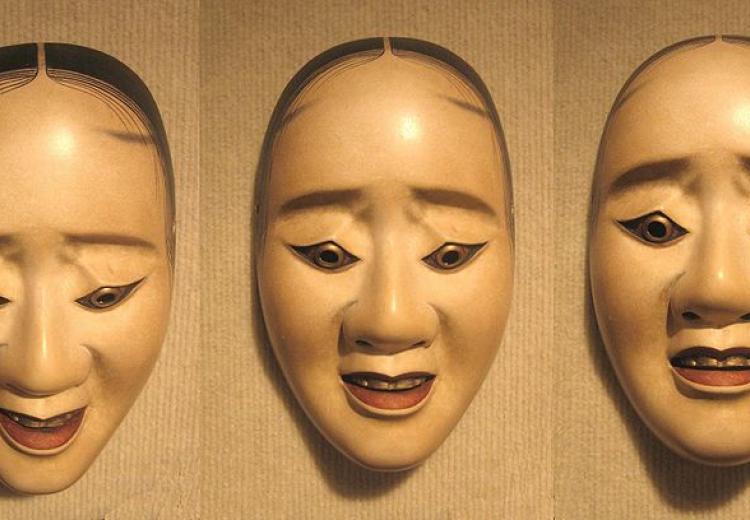Being in the Noh: An Introduction to Japanese Noh Plays

Three pictures of the same Noh "hawk mask" showing how the expression changes with a tilting of the head.
Noh, the oldest surviving Japanese dramatic form, combines elements of dance, drama, music, and poetry into a highly stylized, aesthetic retelling of a well-known story from Japanese literature, such as The Tale of Genji or The Tale of the Heike. Like the dramatic tradition of comedy and tragedy in ancient Greece, the Japanese theater is divided into the comedic, called Kyogen, and the more serious, though not necessarily tragic, Noh plays. In traditional Noh plays, all roles were played by men in traditional Noh masks and costumes. Today, Noh plays are no longer a form of popular entertainment in Japan, but interest and appreciation for the genre endures, and both men and women study its conventions. There are today approximately 1,500 professional performers who make their living largely through performing and teaching Noh.
This lesson provides an introduction to the elements of Noh plays and to the text of two plays, and provides opportunities for students to compare the conventions of the Noh play with other dramatic forms with which they may already be familiar, such as the ancient Greek dramas of Sophocles. By reading classic examples of Noh plays, such as Atsumori, students will learn to identify the structure, characters, style, and stories typical to this form of drama. Students will expand their grasp of these conventions by using them to write the introduction to a Noh play of their own.
Guiding Questions
What are the conventions of a Noh performance?
What do the conflicts within the plot development and characters typical to the Noh play reveal about classical Japanese culture and values?
Learning Objectives
Identify the conventions of the Noh form: the five types of Noh plays, the structure of the plays, the order of performance, and the traditional characters
Describe and analyze the realization the main character, or shite, achieves at the end of the studied plays.
Articulate and discuss at least one element of Japanese culture that the Noh form reveals.
